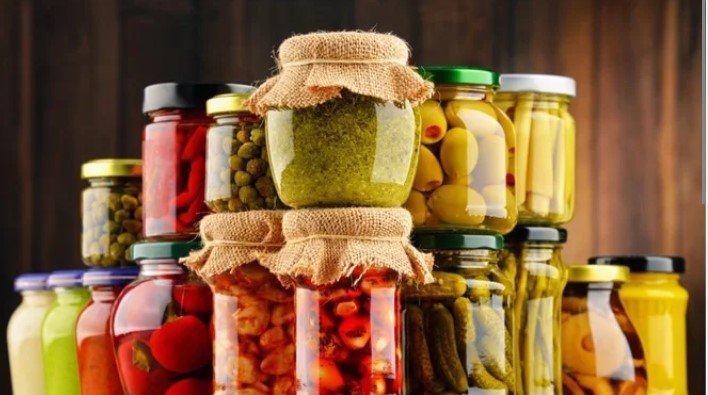Have you ever enjoyed a delicious meal at a restaurant and wondered how you could recreate it in your own kitchen? The good news is, with the right techniques, ingredients, and presentation tips, you can bring the elegance and sophistication of restaurant-style dishes to your home cooking. Whether you’re cooking for yourself, a special occasion, or impressing guests, these steps will help you create restaurant-quality meals in the comfort of your own kitchen.

Focus on Fresh, High-Quality Ingredients
One of the key secrets to restaurant-style cooking is using fresh, high-quality ingredients. Restaurants often emphasize the quality of their produce, meats, and spices to create dishes that stand out. When preparing your own meals, opt for fresh, seasonal ingredients whenever possible, and don’t shy away from specialty items that can elevate your dish.
Tip: Visit local farmer’s markets or specialty food stores for the best ingredients. Fresh herbs, organic vegetables, and high-quality meats can make a huge difference in your cooking.
Master Cooking Techniques
Restaurants often rely on refined cooking techniques to bring out the full flavors of their dishes. These techniques may seem intimidating, but with practice, you can easily incorporate them into your home cooking.
- Searing: Achieve a beautifully crispy, caramelized crust on meats or vegetables by searing them in a hot pan. Searing adds both flavor and texture to your dishes.
- Deglazing: After searing meat or vegetables, add a bit of wine, stock, or broth to the pan to deglaze, lifting all the flavorful browned bits that stick to the bottom of the pan.
- Sous Vide: This technique, used in many fine dining restaurants, involves cooking food at a precise low temperature in a water bath for a perfectly even cook. You can recreate this at home with a sous vide machine.
Tip: Don’t rush the cooking process. Slow cooking or letting your ingredients rest before serving can greatly enhance their flavor.
Pay Attention to Plating and Presentation
A big part of what makes restaurant food special is how it looks on the plate. To make your dishes look as stunning as they taste, consider presentation carefully. A clean, thoughtfully arranged plate can turn an everyday meal into something extraordinary.
- Use clean plates: Wipe off any sauce smears or food splatters on the edges of the plate for a neat presentation.
- Play with height: Stack or layer elements of your dish to add dimension. For example, pile mashed potatoes into a small bowl, then gently invert it on the plate.
- Garnish creatively: Fresh herbs, edible flowers, or finely grated cheese can act as beautiful garnishes. Remember to keep garnishes edible and complementary to the dish.
Tip: Choose the right plate size for your dish. A large plate for a small portion can look sparse, while a small plate for a large portion can seem overstuffed.
Balance Flavors and Textures
Restaurant chefs are masters at balancing different flavors and textures to make each dish exciting. When cooking at home, think about how you can balance sweetness, acidity, bitterness, saltiness, and umami. Combining different textures—such as crispy, smooth, and chewy—can elevate your dish to the next level.
- Acid: Use citrus, vinegar, or pickled ingredients to cut through rich or fatty flavors, like in a creamy pasta or a decadent steak.
- Sweetness: Incorporate a hint of sweetness with fruits, honey, or even a glaze to balance salty or savory dishes.
- Crunch: Add a crunchy element, like crispy fried onions, nuts, or croutons, to contrast with softer ingredients.
Tip: Taste your food as you cook to ensure there’s a balance of flavors. Don’t be afraid to adjust seasonings until you get the perfect balance.
Emphasize Sauces and Stocks
A rich, flavorful sauce can elevate any dish and is a hallmark of restaurant-style cooking. Restaurants often make their sauces from scratch, and while this can be time-consuming, the results are worth it.
- Stocks: A good homemade stock (beef, chicken, or vegetable) forms the base for many sauces and soups. Slow-cooked stock adds depth of flavor that store-bought versions simply can’t match.
- Sauces: Whether it’s a velvety béchamel, a tangy tomato sauce, or a rich demi-glace, sauces can turn a simple dish into something extraordinary.
Tip: Make larger batches of stock and sauces and freeze them in portions. This way, you’ll always have high-quality ingredients ready for your next meal.
Conclusion
With a bit of practice and the right techniques, you can create restaurant-style dishes right in your own kitchen. Focus on high-quality ingredients, perfecting your cooking methods, and paying attention to presentation. By balancing flavors, using homemade sauces, and setting a beautiful dining experience, you can bring the sophistication and finesse of fine dining to your home meals. Whether you’re cooking a simple weeknight dinner or hosting a special occasion, these tips will help you take your cooking to the next level.











